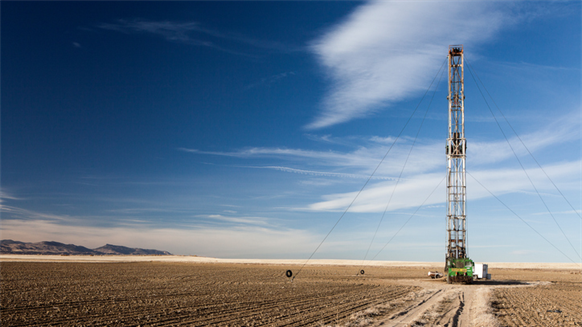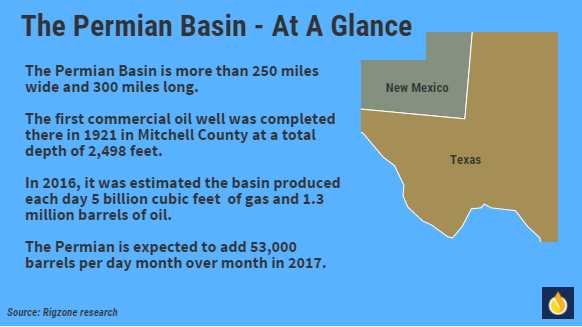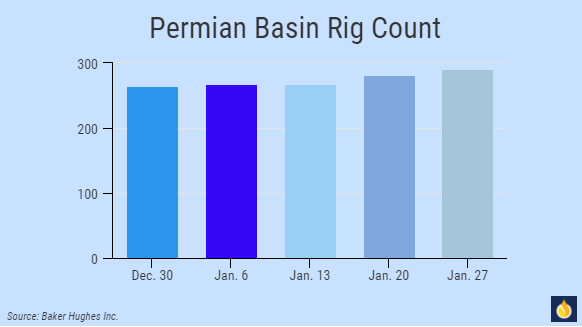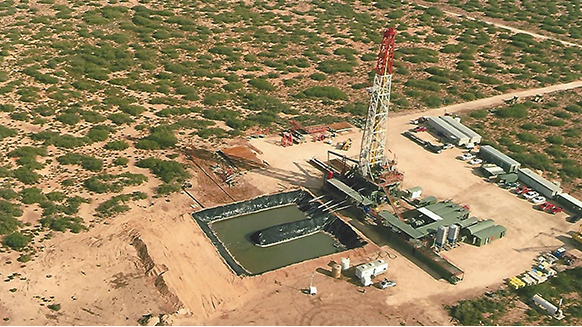A Primed Pump: Can the Mighty Permian Basin Live Up To The Hype?

During the oil and gas industry’s last two dismal years, the Permian Basin stood apart in an apparent “one basin recovery” in which money could be made at $30 per barrel oil. With price stability now in the low- to mid-$50s, the basin has become that much more attractive - luring capital spending, rigs and jobs. And perhaps, even a more widespread recovery.
Indeed, analysts at Barclays say operators can breakeven on average in the play at $43 per barrel. In the upper and middle portions in Midland, Martin and Howard counties, the breakeven price may be as low as $35 per barrel. Double-digit growth is achievable at prices between $45 and $50 per barrel, Barclays said.
During a sustained period of low prices, most M&A activity migrates toward the lower end of the cost curve, said Ben Shattuck, the principal analyst for the Lower 48 at Wood Mackenzie.
“Of those parts, the Permian has a disproportionately larger share. And that’s just driven by sheer luck that the rocks beneath the ground are more productive in a lot of cases than they are in other areas,” he said. “These are world-class assets, you can make money $10 above today’s prices, and at $10 below, you can still earn solid returns.”
In fact, the Permian is so sought after that the price-per-acre has shot up toward $50,000. And when a company pays that much money for land, it needs to produce.
“You don’t buy an asset position and then just sit on it for a long time – particularly not if you’re paying between $25,000 and $50,000 an acre. In order to make the economics of that deal work, you typically have to begin to develop at a pretty rapid clip. And that’s the expectation for the Permian in 2017 and beyond – really through the end of the decade. Now that we’re moving back into a ramp-up phase, and the groundwork for all of that has been laid,” Shattuck said.

M&A On The Way
If mergers and acquisition (M&A) activity signals a recovery on the way, the industry got the message in November. Not only did the agreement by OPEC and non-OPEC members to cut their production – pushing WTI oil above $50 per barrel – the M&A numbers for the year were coming out and showing a surge.
In the Permian Basin alone, more than $20 billion in deals were made last year. That accounted for one quarter of all global M&A, according to Wood Mackenzie. Since the beginning of 2014, the Permian have been the site of deals worth $43 billion – outpacing M&A spending in all other tight oil plays combined.
The Permian deals include big players, small players and acreage across the basin.
“We’re just continuing to see this extraordinarily strong demand for Permian assets,” said Doug Meier, U.S. energy deals leader at PwC. “With all the improvements in production methodologies and technologies, with longer laterals and down-spacing … the productivity of the basin is continuing to improve, which is improving the economics. And the economic improvement is leading to more interest in M&A activity.”
To be sure, the deals haven’t slowed in 2017. Both supermajors and lesser majors are scooping up acreage – apparently undeterred by land values around $50,000 per acre. Billions of dollars in deals are racking up the Permian: In January, ExxonMobil Corp. spent $5.6 billion to double its resource production to 6 billion barrels of oil equivalent (Bboe). Parsley Energy (NYSE:PE), already a player in the Permian, spent $607 million for acreage in the Midland and southern Delaware basins. One week later, Noble Energy bought Clayton Williams Energy acreage in the Delaware Basin for $2.7 billion. And Halcón Resources Corp. spent $705 million to expand in the Delaware side of the Permian.

A Lease On Life
It’s not just majors and longtime wildcatters making their presence known in the Permian.
Avi Mirman, CEO of fledgling public company Lilis Energy, is relatively new to the exploration and production (E&P) world. A longtime banker, he had raised capital for Recovery Energy Inc. But when the company became swallowed by debt – along with more than 100 other E&Ps – Mirman was recruited to manage the company through its restructuring in 2014.
“The company was in really bad shape at that time. It had about $35 million in secured debt, had a decent leasehold position, but really no meaningful production, no meaningful reserves,” he said. “It was really just a carcass dead on the street. So I went to work.”
Mirman raised equity, negotiated out of some of the debt and converted other parts of it. But oil was crashing and taking the business down with it. For most of 2015, the board of directors kept the company afloat, he said.
“The mandate was to find a company that was also distressed in a basin that was economic at $30 oil. So we landed at the Permian, which was really one of the only games in town that could prove to be economic even at $30 oil,” he said.
Enter Brushy Resources, another distressed E&P. But this one has had 3,450 net acres in the core Delaware – and little to no options for raising money. In the midst of the borrowing base redetermination crisis, banks refused to finance new drilling. Mirman made an offer that would bail out both companies through a merger and restructure. The two merged in December 2015, and became Lilis Energy.
To finance the deal, Mirman lived out of a suitcase and cold-called “every Tom, Dick and Harry” with capital potential.
“It wasn’t easy. It was miserable. We had four months where nobody got paid anything,” he said.
Ultimately, Mirman and the board cobbled together investors and brought $33 million in debt down to $5.5 million outstanding at the time of closing.
“You had two disastrous companies come together, and when it was all said and done, you had a super healthy company that was completely recapitalized and restructured, and we were off to the races,” he said.
As such, Lilis closed an M&A deal last year in the Permian to acquire a 640-acre property out of bankruptcy. The deal amounted to less than $5,000 per acre, Mirman said. Shortly thereafter, RSP Permian acquired neighboring Silver Hill acreage for $2.4 billion, at a land value close to $45,000 per acre.
In total, Lilis has 5,600 net contiguous acres in the Permian. But the Denver-based company isn’t finished growing in the basin. Mirman said the company will spend at least $50 million to grow its footprint there during the next six months.
Prime Permian
The first commercial well was successfully drilled in the Permian Basin in 1921. Today, more than 2 million barrels of oil is extracted each day, according to the U.S. Energy Information Administration. And with reserves buried more than five miles underground, experts forecast the basin could continue to produce hydrocarbons for another 90 years.
As the Permian is one of the oldest fields in the U.S., much of its vast acreage has been handed down, piecemeal, through generations of landowners during its life cycle.
“You don’t necessarily have that same type of history or dynamic in a lot of other places in the Lower 48,” Shattuck said. “And certainly nowhere do you have it over such a large geographic or aerial extent. It really does stand alone in how fragmented it is with the vast number of companies that hold assets in West Texas and New Mexico.”
Most acreage on the Texas side of the play is privately owned, but it’s not necessarily easier for a company to secure acreage from individuals or small, private enterprises than a larger, public company, Shattuck said.
“There may be fewer bureaucratic hurdles, but on the other end of the equation is a lot of times with these private companies, the assets hold sentimental value, they’ve been in the owner’s family for a number of generations and they don’t need to show growth in other parts of their portfolio – they’re not beholden to the market,” he explained.
Plus, especially in oil-rich West Texas, private oil companies are often multi-generational and those who make decisions are very savvy.
“It’s unlikely you’re going to get a great deal on something because these people really know what they’re doing,” Shattuck said.

WHAT DO YOU THINK?
Generated by readers, the comments included herein do not reflect the views and opinions of Rigzone. All comments are subject to editorial review. Off-topic, inappropriate or insulting comments will be removed.
- The Rigzone Interview: Private Equity Cash Focuses on Oil, Gas Development
- Could Argentinian Politics Beat the Vaca Muerta?
- The Rigzone Interview: Oil, Gas Goes Digital for Safety, Speed
- Deal Of The Month: EQT, Rice Energy Merge in Mega Marcellus $6.7B Gas Deal
- OpEd: OPEC Production Cuts Fail, Markets Pay for Underestimating US Shale
- Oil Markets Were Already Positioned for Iran Attack
- Germany to Provide $2.3B Aid for Decarbonization of Industrial Sectors
- Chile's ENAP Says Working on Decarbonization Plan
- An Already Bad Situation in the Red Sea Just Got Worse
- USA Regional Banks Dramatically Step Up Loans to Oil and Gas
- Valeura Makes Three Oil Discoveries Offshore Thailand
- Mexico Presidential Frontrunner Plans to Spend Billions on RE, Gas Power
- EU Offers $900MM in Funding for Energy Infrastructure Projects
- Macquarie Strategists Warn of Large Oil Price Correction
- JPMorgan CEO Says LNG Projects Delayed Mainly for Political Reasons
- USA, Venezuela Secretly Meet in Mexico as Oil Sanctions Deadline Nears
- EIA Ups Brent Oil Price Forecast for 2024 and 2025
- Petrobras Discovers Oil in Potiguar Basin
- EIR Says Oil Demand Will Not Peak Before 2030
- Biden Plans Sweeping Effort to Block Arctic Oil Drilling
- Pantheon Upgrades Kodiak Estimates to 1.2 Billion Barrels
- Dryad Flags Red Sea 'Electronic Warfare' Alert
- Russian Oil Is Once Again Trading Far Above the G-7 Price Cap Everywhere
- Oil and Gas Executives Predict WTI Oil Price
- New China Climate Chief Says Fossil Fuels Must Keep a Role
- Chinese Mega Company Makes Another Major Oilfield Discovery
- Oil and Gas Execs Reveal Where They See Henry Hub Price Heading
- Equinor Makes Discovery in North Sea
- ExxonMobil Racks Up Discoveries in Guyana Block Eyed by Chevron
- Macquarie Strategists Warn of Large Oil Price Correction
- DOI Announces Proposal for Second GOM Offshore Wind Auction
- Standard Chartered Reiterates $94 Brent Call
- Chevron, Hess Confident Embattled Merger Will Close Mid-2024


